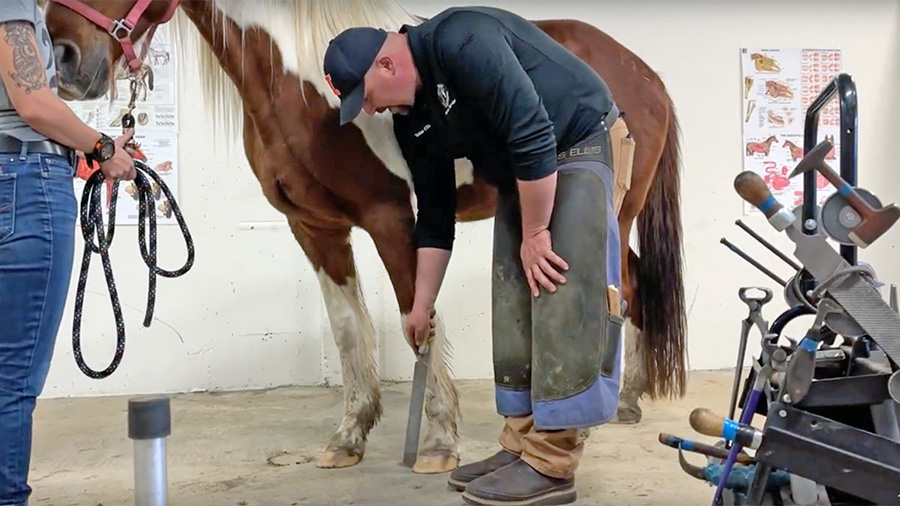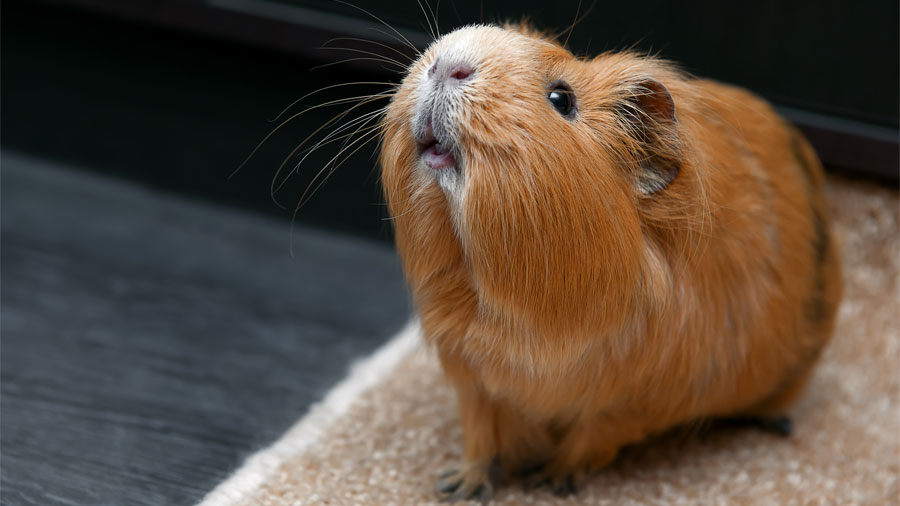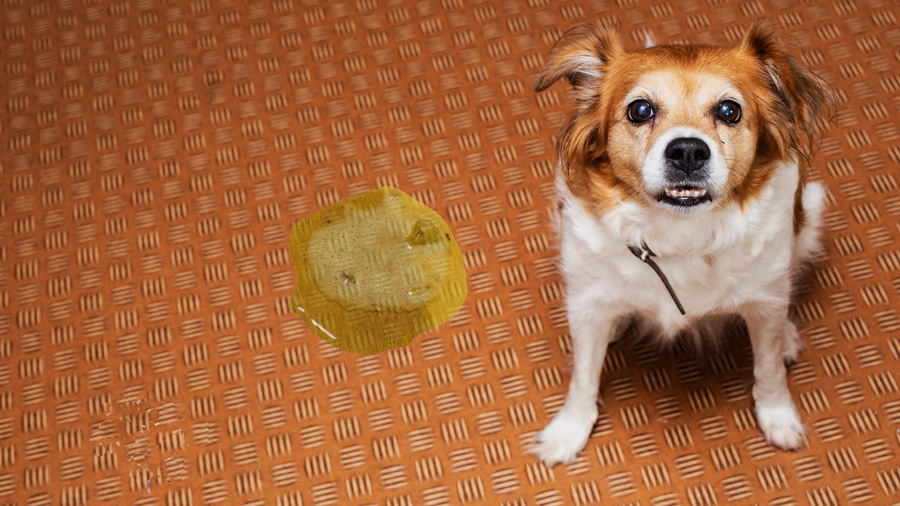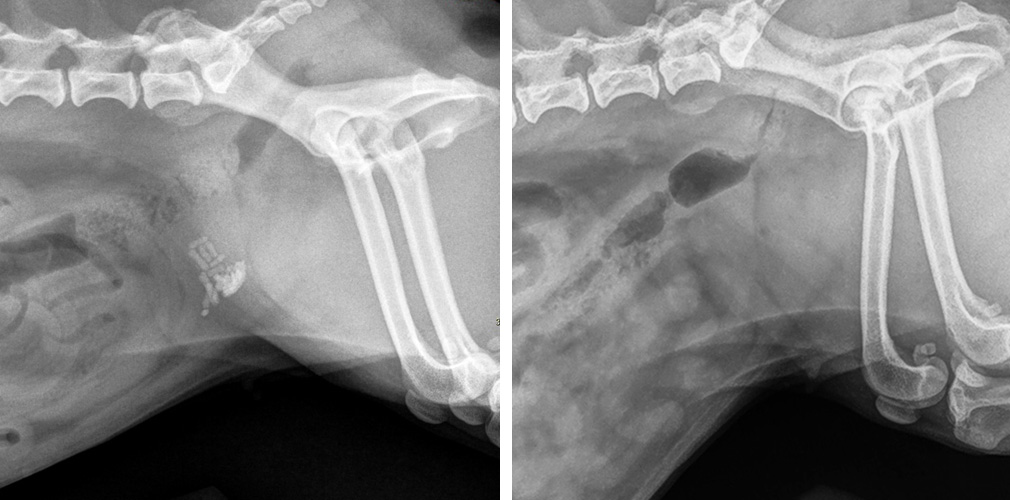Shoe shopping can be complicated. Is it the right color, style, brand, and fit? For horses, getting the right shoes is even more important and complicated. One shoe can mean the difference between a lame and a sound equine companion.
Tobias Ellis, head farrier at the University of Illinois College of Veterinary Medicine, explains how farrier science contributes to the composition, posture, and overall wellbeing of the horse.
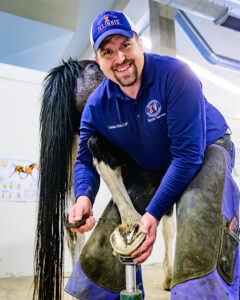
What Is a Farrier?
While some horse owners may work closely with their local farrier, others may have never had their horses “shod” (meaning shoed) or trimmed before.
“Originally, farriers were blacksmiths who specialized in shoeing horses,” Ellis explains. “First, you have to trim the foot, so you are taking care of the hoof capsule itself. Then, depending on what the horse’s job is, you decide what type of shoes it gets or if it gets no shoes at all.”
The hoof capsule corresponds to the “nail” on a finger or toe. Like toenails, hooves grow. They get three-eighths of an inch longer every month. If a hoof grows faster than it can be worn away, it may require trimming.
As for the shoes, they are “no different than with many athletes. We change their shoes depending on what job they are asked to do.”
Farriers and Veterinarians
A farrier plays a crucial role not only in the individual care of the horse but in veterinary medicine as well. While the veterinarian oversees diagnosing a horse’s gait or lameness problem, the farrier finds ways to help the horse cope with its diagnosis.
“Veterinarians look at the whole picture, the whole horse, and then diagnose what’s going on,” Ellis says. “Farriers build shoes or set a trim schedule for a specific horse to help with its conformation and posture”
As a farrier at a veterinary college, Ellis plays additional roles besides shoeing horses. “My job also includes helping to educate veterinary students and supporting horses with surgical pathologies by giving the horse the best base to stand on,” he says.
Working with a Farrier
While there are no standards or requirements to being a farrier in the United States, there are many organizations that provide certification for farriers after they pass the required tests. If an owner is looking for a farrier, Ellis suggests that the best farrier is one eager to continue to learn, not just a farrier from a specific organization.
“Horse owners don’t have to find the very best farrier to begin with,” he says. “What they need is somebody, whether young or old, who continually hunts after education and improvement. Someone who is not stagnant.”
The Right Trim Schedule
Once an owner has selected a farrier, their first step is to set up a trimming schedule. According to Ellis, a long-standing practice was to follow an eight-week trim schedule so that the nail holes would be grown out before placing another shoe. However, he says, recent studies point to a different time frame.
“What we found is that keeping horses on a four- or five-week trim schedule—no longer than five weeks—reduces the negative impact on their tendons and joints,” Ellis explains. “If we take care of the hoof capsule so it doesn’t get really long, the horses won’t have to readjust their muscles and how they move.”
In other words, at a longer trim schedule, the horses will be sore and sometimes even lame for a time until they grow used to their new hoof and/or shoes. A too-short hoof capsule can feel like cutting your own nail too short. To put it in human terms, consider how it feels to wear a brand-new pair of sneakers for a marathon.
Why Horses (May) Need Shoes
“The reason we shoe a horse is traction, which just goes back to protection. You need to protect the hoof when wear exceeds growth,” says Ellis. “However, I push for barefoot more often than most farriers. The longer a horse can stay barefoot, the better.”
Shoes can also help with various problems, or pathologies, of the horse limb, such as laminitis, thrush, and abscesses. They can also help the horse after surgeries that involve the lower limb, such as cutting check ligaments.
“The best way I could word it is that we can support and help change their posture, and by helping change their posture we can help their hoof capsule,” explains Ellis.
Watch a video about Tobias Ellis as one of the “makers” at the University of Illinois Urbana-Champaign.
Communication Is Key
A successful farrier visit comes down to communication and teamwork that includes both the owner and the veterinarian. When owners openly share details about their horse and its roles, farriers can provide the best care plan for the horse. Farriers also need to be kept informed of recent veterinary visits.
Ellis also advocates relying on science-based approaches, such as taking radiographs, or X-rays, before, during, and after shoeing.
“The ‘before’ X-rays help us find imbalances, osteoarthritis, or other pathologies, and the ‘after’ X-rays help us make sure that the corrective shoeing is correcting what it needs to,” he says.
In the end, owners, farriers, and veterinarians all contribute to the health and soundness of the horse. “With veterinarians and farriers working together,” says Ellis, “the horse wins.”
By Lauren Bryan

